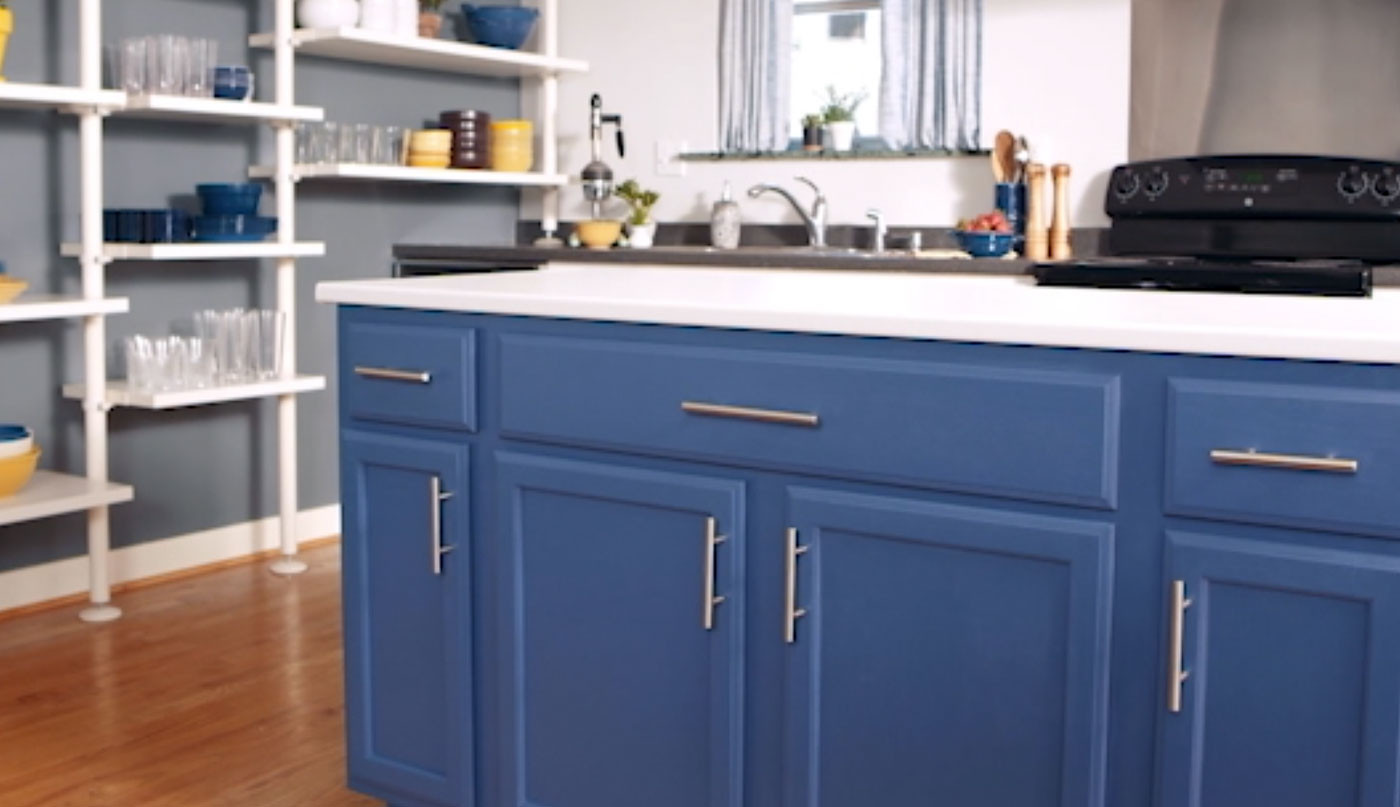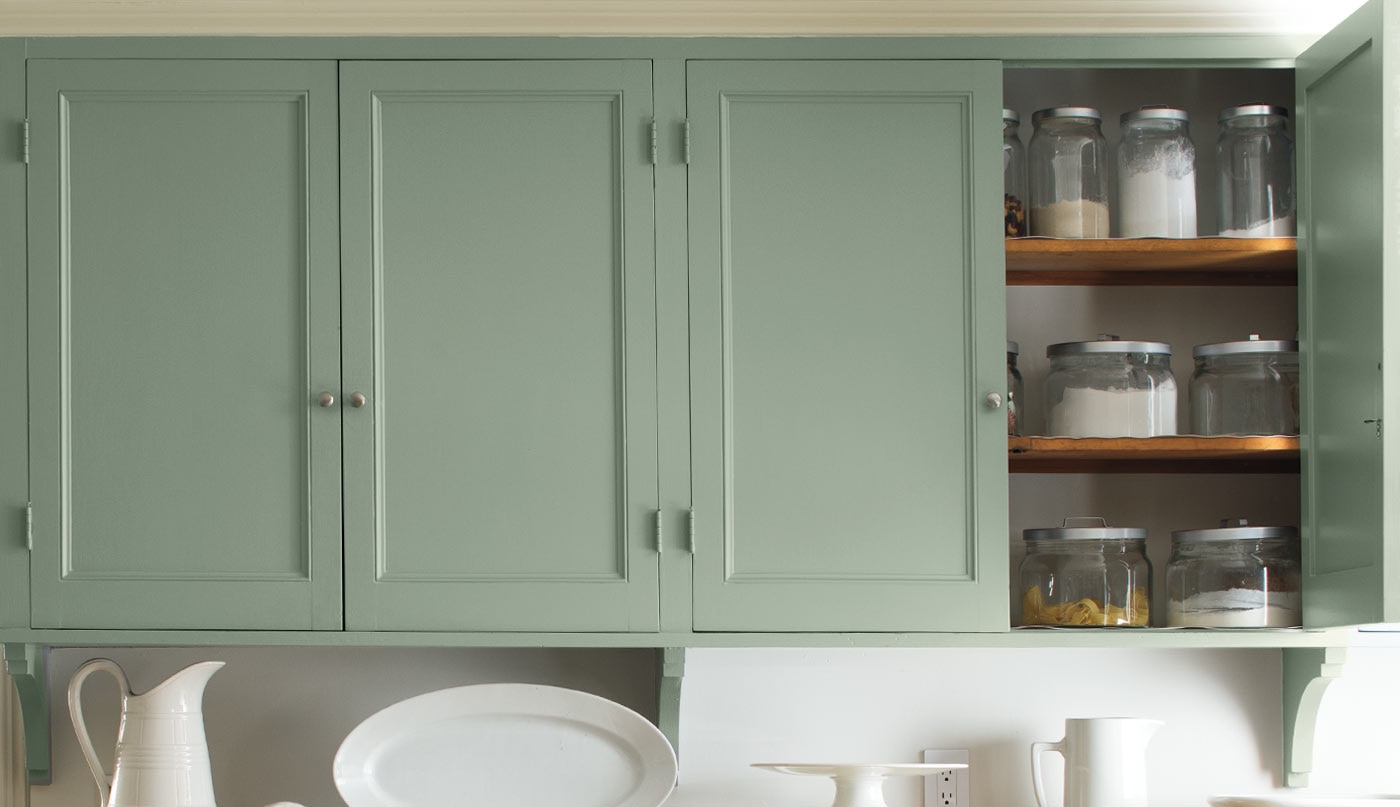Benjamin Moore Kensington Blue in Kitchen Design

Benjamin Moore Kensington Blue, a sophisticated mid-tone blue-gray, offers a versatile backdrop for diverse kitchen styles. Its subtle undertones allow it to adapt to various lighting conditions and design aesthetics, creating a space that is both calming and stylish. The color’s inherent elegance lends itself to both traditional and contemporary designs, making it a popular choice for homeowners seeking a timeless and sophisticated look.
Kensington Blue in Varied Kitchen Styles, Benjamin moore kensington blue cabinets
The versatility of Kensington Blue allows it to seamlessly integrate into a variety of kitchen design schemes. Its muted tone prevents it from feeling overwhelming, even in smaller spaces. The following examples illustrate how this color can be used to create distinct and appealing kitchen aesthetics.
- Traditional Kitchen: A traditional kitchen featuring Kensington Blue shaker cabinets pairs beautifully with creamy white marble countertops and a classic white subway tile backsplash. Warm brass hardware and pendant lighting add to the overall feeling of timeless elegance. The inherent warmth of the marble counters balances the cool tones of the cabinets, creating a harmonious and inviting space. This style evokes a sense of history and refined taste.
- Transitional Kitchen: In a transitional kitchen, Kensington Blue slab-door cabinets create a clean and modern feel. These cabinets are complemented by a quartz countertop in a light gray or creamy beige, offering a contemporary yet neutral counterpoint to the blue. A textured, neutral-toned backsplash, perhaps in a large-format porcelain tile, adds visual interest without overpowering the overall design. This balance between modern lines and classic elements creates a sophisticated and adaptable space.
- Modern Farmhouse Kitchen: A modern farmhouse kitchen utilizes Kensington Blue inset cabinets to achieve a refined yet rustic aesthetic. A butcher block countertop, with its natural wood grain, provides a warm contrast to the cool blue cabinets. A white or light-gray brick backsplash reinforces the farmhouse feel while maintaining a sense of clean lines and modern simplicity. This style combines rustic charm with contemporary functionality, resulting in a space that is both inviting and stylish.
Kensington Blue Mood Board and Color Palettes
The inherent versatility of Kensington Blue allows for a wide range of complementary color schemes. Choosing the right wall and trim colors is crucial in setting the desired mood and atmosphere.
- Calm and Serene: Kensington Blue cabinets paired with soft white walls and crisp white trim create a clean, airy, and calming atmosphere. This combination maximizes light reflection, making the kitchen feel spacious and inviting. The overall mood is one of tranquility and understated elegance.
- Warm and Inviting: Pairing Kensington Blue cabinets with warm, creamy beige walls and white trim introduces a touch of warmth and coziness. This palette creates a welcoming and inviting space, perfect for gatherings and family meals. The warmth of the beige softens the coolness of the blue, creating a balanced and inviting atmosphere.
- Sophisticated and Dramatic: For a more dramatic effect, Kensington Blue cabinets can be paired with deep gray walls and black trim. This creates a sophisticated and modern look, with the dark walls enhancing the richness of the blue cabinets. This color scheme exudes a sense of luxury and modern sophistication.
Kitchen Layouts Featuring Kensington Blue Cabinets
The placement and style of cabinets significantly impact the functionality and flow of a kitchen. Different layouts cater to different needs and preferences.
- L-Shaped Kitchen with Shaker Cabinets: An L-shaped kitchen layout maximizes corner space and provides ample counter and storage space. Using shaker-style Kensington Blue cabinets creates a classic and functional design. This arrangement is ideal for medium-sized kitchens, offering both efficiency and aesthetic appeal.
- Galley Kitchen with Slab Cabinets: A galley kitchen, with its linear design, benefits from the clean lines of slab-door Kensington Blue cabinets. This minimalist approach optimizes space and promotes a sense of order and efficiency. This style is particularly well-suited for smaller kitchens where maximizing space is paramount.
- U-Shaped Kitchen with Inset Cabinets: A U-shaped kitchen offers extensive counter and cabinet space. Using inset Kensington Blue cabinets adds a touch of refined elegance. This layout is suitable for larger kitchens and provides ample storage and work areas. The inset style adds a level of sophistication, enhancing the overall design.
Comparing Kensington Blue to Similar Colors: Benjamin Moore Kensington Blue Cabinets
Benjamin Moore Kensington Blue, with its captivating depth and versatility, often sparks comparisons with other blue-toned paints. Understanding the subtle nuances between these colors is crucial for achieving the desired aesthetic in a kitchen design. This analysis will explore the differences in undertones and how these impact the overall kitchen atmosphere when paired with various metals and lighting conditions.
Kensington Blue’s Undertones and Comparisons
Kensington Blue possesses a sophisticated, slightly grayed undertone that prevents it from appearing overly bright or harsh. This distinguishes it from purer blues or those with warmer, greener undertones. Let’s compare it to three similar colors: Benjamin Moore Hale Navy, a deeper, more saturated blue; Benjamin Moore Aegean Teal, a blue-green blend; and Benjamin Moore Palladian Blue, a lighter, more airy blue. Hale Navy lacks Kensington Blue’s grayed quality, appearing richer and almost black in low light. Aegean Teal introduces a noticeable green undertone, creating a more coastal, less formal feel. Palladian Blue, on the other hand, is significantly lighter and brighter, better suited for spaces needing more openness. The subtle differences in undertones significantly affect the mood: Kensington Blue offers a balance between formality and warmth, while Hale Navy is more dramatic, Aegean Teal more relaxed, and Palladian Blue more cheerful.
Metal Pairing with Kensington Blue Cabinets
The choice of metal finishes for hardware and fixtures dramatically impacts the overall kitchen design when paired with Kensington Blue cabinets. Brushed nickel, with its soft, slightly cool tone, complements Kensington Blue’s grayed undertones, creating a harmonious and sophisticated look. The subtle reflectivity of brushed nickel avoids competing with the cabinets’ color. Brass, with its warm, golden tones, offers a striking contrast. This pairing introduces a touch of vintage elegance, creating a warmer, more inviting atmosphere. The richness of the brass offsets the coolness of the blue. Chrome, a sleek and modern choice, provides a clean, contemporary feel. Its bright, reflective surface enhances the luminosity of the space, making it ideal for smaller kitchens or those with limited natural light. The cool tones of chrome and Kensington Blue create a unified, cool palette.
Lighting’s Influence on Kensington Blue Cabinets
Lighting plays a pivotal role in how Kensington Blue is perceived. Natural light, particularly soft, diffused morning light, reveals the subtle gray undertones, creating a serene and calming ambiance. Direct sunlight, however, might make the blue appear slightly lighter and less saturated. Recessed lighting, providing even illumination, allows the true depth of the color to be appreciated, minimizing any potential color distortion. However, the overall effect can appear slightly cooler than with warmer light sources. Pendant lighting, especially with warmer-toned bulbs, can add warmth and depth to the cabinets. The concentrated light creates visual interest and can highlight the texture of the cabinet doors, enhancing the overall aesthetic. Using a combination of lighting types, such as recessed lighting for general illumination and pendant lights for accentuation, offers the most versatile and flattering presentation of Kensington Blue cabinets.
Practical Considerations and Alternatives

Choosing a paint color for kitchen cabinets, especially a bold hue like Benjamin Moore Kensington Blue, involves careful consideration beyond mere aesthetics. The longevity, maintenance, and overall impact on the space must be weighed against the desired visual effect. This section explores potential challenges and offers practical solutions, along with cost comparisons to alternative cabinet options.
Maintenance Challenges of Kensington Blue Cabinets
Kensington Blue, being a relatively dark and saturated color, will show more dirt and smudges than lighter shades. Fingerprints, grease splatters, and dust particles will be more visible. Regular cleaning is crucial to maintain the cabinets’ pristine appearance. This requires a commitment to more frequent wiping and cleaning than lighter-colored cabinets might necessitate. To mitigate this, consider using high-quality cabinet paint with a durable finish, such as a semi-gloss or satin sheen. These finishes are more resistant to scratches and easier to clean than matte finishes. Employing microfiber cloths and gentle cleaning solutions will further protect the paint and prevent damage. Regular preventative maintenance, such as dusting with a soft brush, can also significantly reduce the frequency of deeper cleaning.
Potential for an Overwhelming Atmosphere
Dark colors, while visually striking, can sometimes make a room feel smaller and more enclosed. Kensington Blue, with its rich tone, is no exception. In smaller kitchens, this could lead to a feeling of claustrophobia. To counteract this, incorporate ample lighting – both natural and artificial. Consider using recessed lighting, pendant lights, and under-cabinet lighting to brighten the space and reflect the blue hue, creating a more open and inviting atmosphere. Light-colored walls and countertops can also help to balance the darkness of the cabinets, preventing the room from feeling too heavy. Strategically placed mirrors can further enhance the feeling of spaciousness by reflecting light and expanding the perceived size of the room.
Cost Comparison of Cabinet Materials
The cost of kitchen cabinets varies significantly depending on the material. Below is a comparative table illustrating the estimated cost per linear foot for different options, alongside their durability and maintenance requirements. These are estimates and actual costs can vary based on factors like cabinet style, construction quality, and installation costs.
| Material | Estimated Cost per Linear Foot (USD) | Durability | Maintenance Requirements |
|---|---|---|---|
| Solid Wood (e.g., Maple, Cherry) | $300 – $800+ | High; durable and repairable | Regular cleaning; occasional refinishing |
| Laminate | $50 – $200 | Medium; susceptible to chipping and water damage | Easy cleaning; avoid harsh chemicals |
| Medium-Density Fiberboard (MDF) with Paint | $100 – $300 | Medium; susceptible to moisture damage if not properly sealed | Regular cleaning; avoid abrasive cleaners |
| Thermofoil | $75 – $250 | Medium; resistant to scratches and moisture | Easy cleaning; avoid harsh chemicals |
Kensington Blue Cabinets: A Practical and Versatile Choice
The decision to use Kensington Blue, or any other color, for kitchen cabinets is deeply personal. It’s a reflection of individual taste and the desired atmosphere for the heart of the home. While the color’s boldness presents certain maintenance considerations, these are manageable with proper planning and care. The rich depth of Kensington Blue can create a sophisticated and elegant space, particularly when balanced with complementary elements. The visual impact, however, should be considered within the context of the entire kitchen design, ensuring a harmonious and functional environment. The choice is not simply about the color itself, but about how it interacts with the lighting, flooring, countertops, and other design features to create a space that is both beautiful and practical. A well-designed kitchen using Kensington Blue can be a testament to thoughtful consideration and personalized style, showcasing the human element in design rather than simply following trends.
